| Anmol Chemicals is the pioneer manufacturers of Heavy Bismuth Subnitrate, Pharmaceutical Excipients Chemicals in India. We offer Halal and Kosher Heavy Bismuth Subnitrate made in an ISO9001, ISO22000 (FSSC22000) cGMP & GLP certified facility. Our group has several manufacturing facilities spread across the world, supported by toll manufacturers and representatives in UAE, Europe, Africa, USA, China and has several associated manufacturing facilities spread across India. All the Information on Physics, Chemistry, Applications, Uses and Technology on Manufacture of Heavy Bismuth Subnitrate is in these pages. |
| The units have one or more of the certifications like FDA GMP, ISO 9001, ISO 22000, HACCP, REACH, Kosher & Halal |

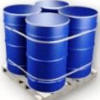
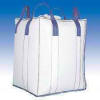
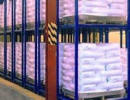
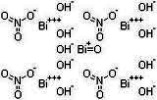
SDS MSDS of Heavy Bismuth Subnitrate Manufacturers
Heavy Bismuth Subnitrate CAS Number 1304-85-4, EINECS EC Number 215-136-8, HS Code ---**; Molecular Weight 1461.99, Molecular Formula: Bi5O(OH)9(NO3)4
Specifications of Heavy Bismuth Subnitrate Manufacturers
Heavy Bismuth Subnitrate SDS MSDS Sheet, Material Safety Data Sheet
1. Product Identification
Synonyms: Bismuth(III) nitrate basic, Bismuthyl nitrate, Bismuth(III) oxynitrate, Bismuth(III) subnitrate
CAS No.: 1304-85-4
EINECS EC Number: 215-136-8
Molecular Weight: 1461.99
Chemical Formula: Bi5O(OH)9(NO3)4
Recommended usage: Industrial Manufacturing.
Suppliers: As per letterhead.
2. Hazards Identification
GHS, Globally Harmonized System Classification in accordance with 29 CFR 1910
Classification according to Regulation (EC) No 1272/2008
Oxidizing solids Category 3
Hazardous to the aquatic environment, acute hazard Category 3
Skin corrosion/irritation Category 2
Serious eye damage/eye irritation Category 2A
Specific target organ toxicity - single exposure Category 3, Respiratory system
Hazardous to the aquatic environment, acute hazard Category 3
Labeling according GHS & Regulation (EC) No 1272/2008
GHS Label Elements 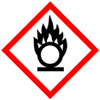 Oxidizing Solid |
GHS Label Elements |
Signal Word: Warning
Hazard Statements:
H272: May intensify fire; oxidizer.
H315 : Causes skin irritation.
H319: Causes serious eye irritation.
H335: May cause respiratory irritation.
H402: Harmful to aquatic life.
Precautionary Statements
P210: Keep away from heat/sparks/open flames/hot surfaces. - No smoking.
P220: Keep/Store away from clothing/other combustible materials.
P221: Take any precaution to avoid mixing with combustibles.
P260: Do not breathe dust/fume/gas/mist/vapors/spray.
P264: Wash ... thoroughly after handling.
P273: Avoid release to the environment.
P280-Wear protective gloves/protective clothing/eye protection/face protection.
P302+P352 - IF ON SKIN: Wash with plenty of soap and water.
P303+P361+P353 - IF ON SKIN (or hair): Remove/Take off immediately all contaminated clothing. Rinse skin with water/shower.
P304 + P340 - IF INHALED: Remove victim to fresh air and keep at rest in a position comfortable for breathing.
P305 + P351 + P338 - IF IN EYES: Rinse cautiously with water for several minutes. Remove contact lenses, if present and easy to do. Continue rinsing.
P314: Get Medical advice/attention if you feel unwell.
P360: Rinse immediately contaminated clothing and skin with plenty of water before removing clothes.
P332+P313: If skin irritation occurs: Get medical advice/attention.
P337+313: If eye irritation persists get medical advice/attention.
P305+P351+P338: IF IN EYES: Rinse cautiously with water for several minutes. Remove contact lenses, if present and easy to do. Continue rinsing.
P370+378: In case of fire: Use Dry chemical, carbon dioxide, Halon, water spray, or fog for extinction.. If water is used, apply from as far a distance as possible.
P362: Take off contaminated clothing and wash before reuse.
P501: Dispose of contents/container in accordance with local/regional/national/international regulations.
Classification according to EU Directives 67/548/EEC or 1999/45/EC:
O Oxidising
Xi Irritant
R8 Contact with combustible material may cause fire
R36/37/38 Irritating to eyes, respiratory system and skin
For the full text of the S-statement & R-phrases mentioned in this Section, see Section 16.
3. Composition/Information on Ingredients
Ingredient: Heavy Bismuth Subnitrate
CAS No.: 1304-85-4
EINECS EC Number: 215-136-8
Percent: 99 - 100%
4. First Aid Measures
Inhalation: If Heavy Bismuth Subnitrate is inhaled, remove to fresh air. If breathing is difficult, give oxygen. Get medical attention.
Ingestion: Do not induce vomiting unless directed to do so by medical personnel. Never give anything by mouth to an unconscious person. If large quantities of this material are swallowed, call a physician immediately. Loosen tight clothing.
Skin Contact: Immediately flush skin with plenty of water for at least 15 minutes while removing contaminated clothing and shoes. Get medical attention. Wash clothing before reuse. Thoroughly clean shoes before reuse.
Eye Contact: Check for and remove any contact lenses. In case of contact, immediately flush eyes with plenty of water for at least 15 minutes. Get medical attention.
5. Fire Fighting Measures
Fire: Heavy Bismuth Subnitrate is not combustible, but substance is a strong oxidizer and its heat of reaction with reducing agents or combustibles may cause ignition.
Explosion: Some nitrates may explode when shocked, exposed to heat or flame, or by spontaneous chemical reaction. Sealed containers may rupture when heated. Sensitive to mechanical impact.
Fire Extinguishing Media: Dry chemical, carbon dioxide, Halon, water spray, or fog. If water is used, apply from as far a distance as possible. Water spray may be used to keep fire exposed containers cool. Do not allow water runoff to enter sewers or waterways.
Special Information: Wear full protective clothing and breathing equipment for high-intensity fire or potential explosion conditions. This oxidizing material can increase the flammability of adjacent combustible materials.
6. Accidental Release Measures
Small Spill: Use appropriate tools to put the spilled solid in a convenient waste disposal container.
Large Spill: Oxidizing material. Stop leak if without risk. Avoid contact with a combustible material (wood, paper, oil, clothing...). Keep substance damp using water spray. Do not touch spilled material. Use personal protective equipment. Avoid dust formation. Avoid breathing vapors, mist or gas. Ensure adequate ventilation. Evacuate personnel to safe areas. Avoid breathing dust. Prevent entry into sewers, basements or confined areas; dike if needed. Call for assistance on disposal.
7. Handling and Storage
Keep in a tightly closed container, stored in a cool, dry, ventilated area. Protect against physical damage and moisture. Isolate from any source of heat or ignition. Avoid storage on wood floors. Separate from incompatibles, combustibles, organic or other readily oxidizable materials. Containers of may be hazardous when empty since they retain product residues (dust, solids); observe all warnings and precautions listed for the product.
Keep away from sources of ignition - No smoking.
8. Exposure Controls/Personal Protection
Airborne Exposure Limits: None established.
Ventilation System: A system of local and/or general exhaust is recommended to keep employee exposures as low as possible. Local exhaust ventilation is generally preferred because it can control the emissions of the contaminant at its source, preventing dispersion of it into the general work area.
Personal Respirators (NIOSH Approved): For conditions of use where exposure to dust or mist is apparent and engineering controls are not feasible, a particulate respirator (NIOSH type N95 or better filters) may be worn. If oil particles (e.g. lubricants, cutting fluids, glycerin, etc.) are present, use a NIOSH type R or P filter. For emergencies or instances where the exposure levels are not known, use a full-face positive-pressure, air-supplied respirator.
Skin Protection: Wear impervious protective clothing, including boots, gloves, lab coat, apron or coveralls, as appropriate, to prevent skin contact.
Eye Protection: Use chemical safety goggles and/or full face shield where dusting or splashing of solutions is possible. Maintain eye wash fountain and quick-drench facilities in work area.
9. Physical and Chemical Properties
Appearance: Solid.
Odor: Odorless.
Solubility: Insoluble in water
Specific Gravity: 4.93
pH: NA
% Volatiles by volume @ 21C (70F): 0
Boiling Point: NA
Melting Point: 500C
Vapor Density (Air=1): NA
Vapor Pressure (mm Hg): Negligible @ 20C
10. Stability and Reactivity
Stability: Heavy Bismuth Subnitrate is stable under ordinary conditions of use and storage.
Hazardous Decomposition Products: Oxides of bismuth and nitrogen and toxic metal fumes may form when heated to decomposition.
Hazardous Polymerization: Will not occur.
Incompatibilities: Alkaline bicarbonates, soluble iodides, gallic acid, calomel, tannins, salicylic acid.
Conditions to Avoid: Heat, flames, ignition sources and incompatibles.
11. Toxicological Information
Oral rat LD50: Not available.
This product is not classifiable as to its carcinogenicity based on its IARC, ACGIH, NTP, or EPA classification.
Mutagenic Effects: Not available.
Teratogenic Effects: Not available.
Developmental Toxicity: Not available.
12. Ecological Information
Ecology - water: Not available.
Bioaccumulative potential: No data available
13. Disposal Considerations
Whatever cannot be saved for recovery or recycling should be handled as hazardous waste and sent to a RCRA approved waste facility. Processing, use or contamination of this product may change the waste management options. Dispose of container and unused contents in accordance legal requirements.
14. Transport Information
Domestic (Land, D.O.T.)
Proper Shipping Name: Nitrates, inorganic, n.o.s.
Hazard Class: 5.1
UN/NA: UN1477
Packing Group: II
International (Water, I.M.O.)
Proper Shipping Name: Nitrates, inorganic, n.o.s.
Hazard Class: 5.1
UN/NA: UN1477
Packing Group: II
International (Air, I.C.A.O.)
Proper Shipping Name: Nitrates, inorganic, n.o.s.
Hazard Class: 5.1
UN/NA: UN1477
Packing Group: II
15. Regulatory Information
USA:
TSCA: Yes
SARA 302: No
SARA 313: No
SARA 311/312: Acute: No; Chronic: No; Fire; Yes; Pressure: No; Reactivity: No (Pure / Solid)
California Prop. 65 Components: This product does not contain any chemicals known to State of California to cause cancer, birth defects, or any other reproductive harm.
TSCA 8(b) inventory: No
TSCA 12(b): No
Canada WHMIS: CLASS C: Oxidizing material.
Section 16 - Additional Information
EINECS EC Number: 231-818-8
H272 = May intensify fire; oxidizer.
H315 = Causes skin irritation.
H319 = Causes serious eye irritation.
H335 = May cause respiratory irritation.
H402 = Harmful to aquatic life.
O Oxidising
Xi Irritant
R8 Contact with combustible material may cause fire
R36/37/38 Irritating to eyes, respiratory system and skin
Disclaimer:
**************************
Our company provides this MSDS sheet in good faith but makes no representation as to its comprehensiveness or accuracy. This SDS sheet is intended only as a guide to the appropriate precautionary handling of the material by a properly trained person using this product. The above information has been compiled from various sources and has the possibility of discrepancy and being out-dated information. Individuals receiving the information must exercise their independent judgment and do further search in determining its appropriateness for a particular purpose. In no case shall our company be liable to loss or damages by the product user.
**************************
Manufacturers
Anmol Chemicals
S-8, SARIFA MANSION, 2ND FLANK ROAD, CHINCHBUNDER, MUMBAI 400009, INDIA
TEL: (OFFICE) 91-22-23770100, 23726950, 23774610, 23723564. FAX: 91-22-23728264
e-mail: anmolc@mtnl.net.in

Exports to USA, Canada, UAE, Dubai, South Africa, Tanzania, Kenya, Nigeria, Egypt, Uganda, Turkey, Mexico, Brazil, Chile, Argentina, Europe Netherlands, Italy, Spain, Germany, Portugal, France, Malaysia, Indonesia, Thailand, Vietnam, Korea, Japan, etc.
Copyright and Usual Disclaimer is Applicable. 12 January, 2022
Barter
They who love thee on this earth, keep calling on thee and chanting thy beads
Lest thou forgetest.
They assign the credit of their hard work to your blessings
They keep you amused.
They come to thy temple with baskets of fruits, as if you were a glutton
They deny the same to their children.
They offer you milk for a bath and burn the ghee
They hardly understand the meaning of it.
They bring gold and diamonds. They come with beating of drums
They love to advertise their offerings.
They offer you a small bribe as advance for booty, called lottery
They love to dream.
I do not bow down at your door
I do not bargain for booty
Your promise of the heaven does not lure me
Your hell-fire does not scare me
I do not even know the proper method of prayer
I do not offer any thing to you
Ages have gone by and I have not seen you my lord
Yet my love for you keeps waiting for you
